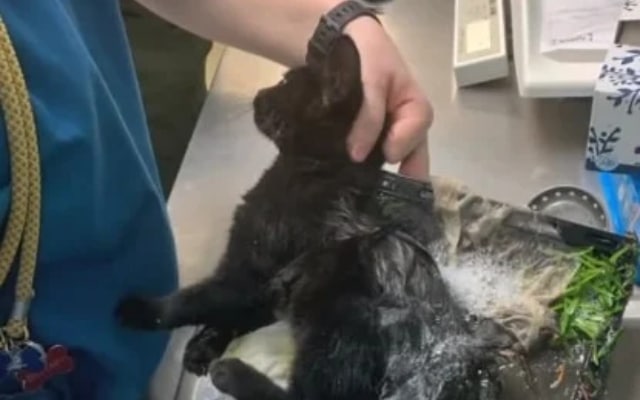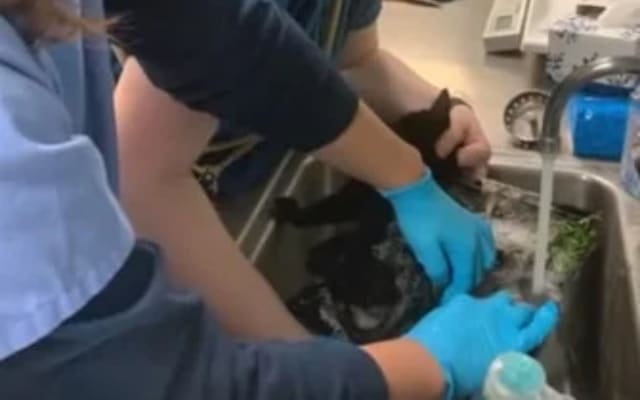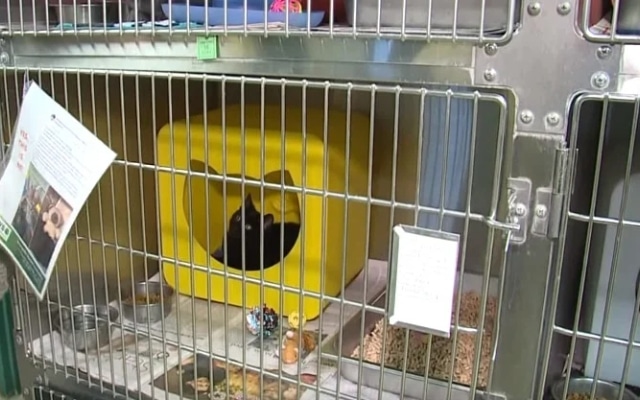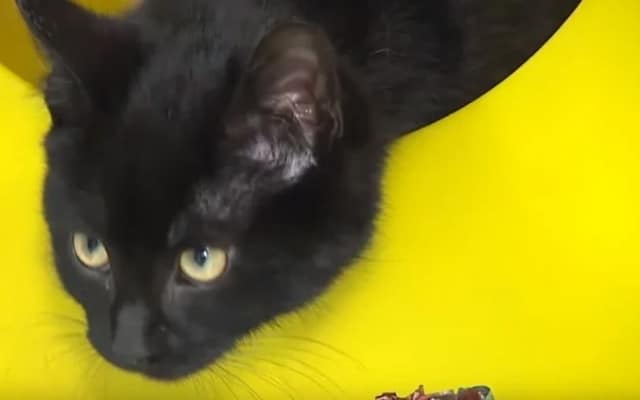Nobody enjoys the sight of stray or wild animals rummaging through their trash, especially when they leave a mess behind. However, it’s important to remember that these animals are just trying to survive. Making their struggle for survival even harder is unkind.

A tiny black kitten, just a few weeks old, was found wandering the streets with something unusual stuck to his side—a glue trap. The person who discovered him noticed the kitten, later named Elmer, was disoriented and in shock.
The kind individual brought Elmer to the Humane Animal Welfare Society (HAWS) for help. There, caregivers Brittany, Megan, and Caitlin worked carefully to remove the trap from Elmer’s body without hurting him. They used plenty of soap and oil to clean the glue from his fur and paws.

Remarkably, Elmer stayed calm throughout the entire process, almost as if he knew they were helping him. To aid in his recovery, Elmer was placed with a foster family for a few weeks. Unlike some cats, Elmer loved to snuggle. His foster family discovered that if you cradle him like a baby, he would start purring and fall asleep.
During his time with the foster family, Elmer regained his strength and grew back his beautiful, smooth black coat. When he was ready for adoption, it only took a few minutes after HAWS opened for someone to show interest in adopting Elmer. The waiting list to adopt him has since grown, ensuring that Elmer will find a loving home.

Glue traps, though effective, can be problematic. Any animal that touches these traps gets stuck, which is why they are so popular. However, they often catch unintended animals, like Elmer the kitten. Birds and even dogs can also get trapped. Removing an animal from a glue trap is not easy, and many small animals die as a result. There’s nothing humane about these traps. It’s no wonder that countries like New Zealand and Ireland have banned them, and retailers in Canada are also moving to remove them from shelves.

There are better alternatives. Preventative measures can help keep animals away. Sealing gaps where rodents can enter is a good start. Using rodent deterrents on items they might chew on, like cables and water pipes, is also effective. Securing your garbage and compost is crucial. Live traps can be used to catch and release animals without harming them.
There are many options available, and the first solution you see on the shelf is not always the best. Even something that seems as harmless as a glue trap can have serious consequences.
